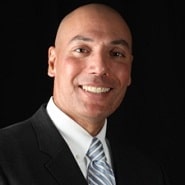
Albert Villarin, MD, CMIO & Associate CIO, Staten Island University Hospital
Similar to industry transformation, changes in our healthcare industry require continuous, objective evaluation and restructuring of the current fluid state. As healthcare leaders across the country can attest, many of the care delivery processes in place just a decade ago are now considered antiquated, and others are simply non-existent. We are observing technological innovation moving at a faster pace than one’s own career can evolve — to the point that new career paths and healthcare leadership roles are being created and existing ones are being transformed.
“The role we were trained for is not the role that has emerged,” wrote R. Timothy Rice, President Emeritus of Cone Health and President and Chairman of the National Center for Healthcare Leadership.” And that reality is increasingly the case throughout the entire leadership team, not just at the CEO level.”
When it comes to the evolution of healthcare leadership roles, I’ve found it useful to draw comparisons to database normalization. Database normalization organizes attribute columns and relational tables to reduce data redundancy and improve data integrity. Seen in parallel with database normalization, I believe healthcare workforce restructuring is warranted and should be continuously maintained to provide encompassing technical knowledge that best fits clinical requirements and financial availabilities.
The current mantra “do more with less” is no better defined than in modern healthcare’s reduction of clinical payers and payments forcing hospitals to deliver more efficient care with superior outcomes. The new value-based model will replace fee for service and drive “rewards [for] providers for delivering superior value to patients.” Reducing the delta of waste and clinical workflow inefficiencies to fuel patient experiences is based in continuous normalization.
The case for normalization of healthcare leadership stems from the expansion and promotion of clinician executives into senior positions that were not previously occupied by medical professionals. Introduction of medical informatics masters degrees and post-graduate fellowships, combined with national organizations such as AMDIS-CHIME, has opened new opportunities for executive clinicians to blend into traditionally informatics-oriented roles. As clinical budgets become squeezed by federal and private payer reductions, employee base reductions are becoming more mandatory. As with databases, normalization to a common, more efficient process is necessary to enhance productivity. I predict healthcare executive leadership roles will evolve to include clinicians who can manage highly integrated clinical informatics specialties assimilating across the c-suite.
As organizations move from EHR implementation to population health initiatives and analytics, the role of the CMIO is becoming more strategic, transitioning to a new role in many health systems as Chief Health Information Officer (CHIO). Many organizations are also transitioning clinicians into senior executive positions. In particular, physicians are being asked to lead care model transformation, clinical informatics, and population health management initiatives.
In an effort to hire leaders to support innovation and transformation, Philadelphia-based Jefferson, which includes Thomas Jefferson University and Jefferson Health, hired new vice presidents for decision analytics and for telehealth and urgent care, along with adding the role of Chief Patient Experience Officer.
CIO and CMIO roles will also continue to merge and evolve, particularly as they encounter growing responsibilities to use information systems to support value-based care and other quality initiatives. Both roles also require heavy involvement in clinical operations. No doubt this evolution creates challenges, which is why a partnership or merger between the two roles and a firm understanding of each other’s realms, can make this type of operation work, according to Health Data Management.
Realigning executive positions based on professional education, training, and experience is vital for the survival of many healthcare institutions. From a workforce perspective, normalization of healthcare leadership roles can lessen financial strains and streamline leadership process efficiency across the entire organization. Ultimately, forging the future of health informatics will bring change, normalization, and efficiency for both clinicians and informaticists.
This piece was written by Albert Villarin, MD, who serves as CMIO of Staten Island University Hospital (part of Northwell Health), and CMIO at Burwood Group. To follow Burwood Group on Twitter, click here.


Share Your Thoughts
You must be logged in to post a comment.